I. Introduction
We have already seen ChatGPT vs Google, if this can replace this top notch search engine or not. Now, Everone is looking for an answer for ChatGPT vs other ChatBots.
ChatGPT: It’s an OpenAI project called ChatGPT (Chat Generative Pretrained Transformer), a massive linguistic model. It mimics human language processing by employing deep learning methods.
Other Chatbots: A “chatbot” is an AI program made to simulate human conversation. Among the different kinds of chatbots, there are rule-based chatbots, retrieval-based chatbots, generative chatbots, and hybrid chatbots. They all respond to inputs in their own unique ways.
B. Purpose of the article
We’ll try to put an end to the debate about ChatGPT vs other chatbots. This article looks at how ChatGPT compares to other chatbots in terms of its features, accuracy, adaptability, and cost. We will look briefly at the ChatGPT vs Google LaMDA as well. This article will introduce readers to ChatGPT, describe different kinds of chatbots, and compare them to ChatGPT so that they can better understand the similarities and differences between these artificial intelligence programs. The article will also discuss the possibilities and future of chatbots and offer advice to readers considering implementing one into their own lives or businesses.
II. Overview of ChatGPT
A. Description of OpenAI ChatGPT
OpenAI’s ChatGPT uses deep learning to create a language model. It can generate natural-sounding text responses from basic questions to in-depth discussions. ChatGPT has been trained with a lot of data to understand and create text in different languages and styles.
B. How OpenAI ChatGPT works
ChatGPT uses a Transformer, a type of neural network trained with a lot of data, to analyze text. The ChatGPT model responds to user input based on what it knows about language patterns and relationships. Samples of the most likely outcomes are used to make the response, and the model learns from how the user reacts to improve its predictions. ChatGPT is the most accurate AI model to date, so everyone is saying that maybe ChatGPT will rule the world of artificial intelligence. Of course this is not possible, as ChatGPT has limitations as well.
C. Advantages of OpenAI ChatGPT
- Human-like Responses: ChatGPT’s ability to generate human-like responses makes it well-suited for various applications, from customer service to creative writing.
- Multilingual Capabilities: OpenAI ChatGPT can understand and generate text in multiple languages, making it a versatile tool for global use.
- High Accuracy: ChatGPT’s deep learning algorithms and vast training data result in increased accuracy in generating responses.
- Customizability: OpenAI ChatGPT can be fine-tuned for specific use cases, allowing users to create custom chatbots tailored to their needs.
D. Limitations of OpenAI ChatGPT
- Bias: Like any machine learning model, ChatGPT can exhibit preferences based on the data it was trained on. It’s essential to address these biases before deploying ChatGPT in real-world applications.
- Cost: As a large language model, ChatGPT requires significant computational resources and can be expensive.
- Ethical Concerns: The ability of chatbots like ChatGPT to generate human-like responses raises critical ethical concerns, such as the potential to manipulate or deceive people.
- Limited Contextual Awareness: Although OpenAI ChatGPT has been trained on vast amounts of data, it still needs a true understanding of the world and can struggle with context-dependent tasks.
III. Other Chatbots
A. Rule-based chatbots
AIML: XML is used by AIML (Artificial Intelligence Markup Language) to describe how inputs and outputs are linked. AIML is a rule-based chatbot framework. AIML chatbots are easy to make and keep up to date, but they may need human help with more complex or nuanced answers.
Rasa: Rasa is an open-source AI conversation platform. Using rule-based and machine-learning methods enables developers to create unique chatbots.
Mitsuku: Mitsuku is a chatbot that uses artificial intelligence and has won many awards for how well it talks like a natural person. It generates its answers using various methods, some of which are based on AIML.
B. Retrieval-based chatbots
Microsoft Bot Framework: The Microsoft Bot Framework is a cloud-based service for making and using chatbots. It gives developers different services and tools to make chatbots meet their needs.
Google Dialogflow: Google created Dialogflow as a platform for conversational AI. It has an easy-to-use interface for making chatbots and can connect to various outside systems.
Amazon Lex: Amazon Lex is a platform for developing conversational AI applications powered by deep learning. Automatic speech recognition and natural language processing can make chatbots that can understand and respond to what people say and type.
C. Generative chatbots
OpenAI GPT-3: To that end, OpenAI created a new language model called OpenAI GPT-3, which is a sizable language model not unlike ChatGPT. It’s excellent for conversational AI because it can answer many questions as a human would.
Grover: Grover is OpenAI’s platform for creating generative chatbots. It can be changed to fit different needs and uses deep learning algorithms to respond consistently and in different ways to what users type.
DALL-E: DALL-E is an OpenAI-created system for creating images using artificial intelligence. Its ability to develop ideas based on written descriptions makes it a valuable tool for various artistic projects.
D. Hybrid chatbots
Facebook’s M: M is a cross between a traditional chatbot and a virtual assistant. Facebook made it. It can respond to different inputs and talking methods using rule-based and machine-learning techniques.
WIT.ai: WIT.ai is a natural language processing platform for creating conversational AI applications like chatbots. It works with popular chat apps like Facebook Messenger and Slack and gives developers an easy-to-use API and several tools for making their chatbots.
Replika: Replika is a chatbot platform that takes a hybrid approach, using both rule-based and machine learning-based techniques to generate responses. Using deep learning algorithms, it adapts to each user based on their past interactions with the system.
IV. ChatGPT vs other chatbots: A comparison
A. Comparison of Functionality:
In response to a wide variety of inputs, ChatGPT can generate responses that sound natural. It can process intricate dialogues and come up with logical, nuanced answers. Nonetheless, it lacks the features of other chatbots discussed here, such as Microsoft’s Bot Framework, which offers a wide variety of services and tools for creating and deploying chatbots. Other chatbots, such as Rasa and WIT.ai, offer more flexibility and personalization options than ChatGPT.
B. Comparison of Accuracy:
This is probably the most important step, when we talk about ChatGPT vs other chatbots. Of course, reliability matters most. OpenAI ChatGPT’s ability to talk like a person is impressive and can easily handle complex conversations. But if the input is vague or not part of its training data, it may come up with answers that need to be more suitable or related to the information. But some chatbots, like Mitsuku, have been made to answer questions accurately and in a way that sounds like a person. For this, they have won awards.
C. Comparison of Flexibility:
ChatGPT’s flexibility enables it to be used for a variety of purposes. Other chatbots, like Replika, are made to be very flexible and easy to change, so developers can change how they act to fit the needs of a particular use case. Other chatbots, like WIT.ai, make connecting to other systems and platforms easier by giving you an API and different tools to build chatbots.
D. Comparison of Cost:
A chatbot like ChatGPT, or another one, could cost anywhere from free to tens of thousands of dollars, depending on the platform it is built on, the degree of customization it needs, and the purpose it is used for. Although Rasa and others like it are free to use, others like the Microsoft Bot Framework and Google Dialogflow can cost a pretty penny. Also, some of the more advanced platforms, such as OpenAI GPT-3 and Replika, can be expensive because their deep learning algorithms need a lot of computing power.
V. A Comparison Table ChatGPT vs other Chatbots
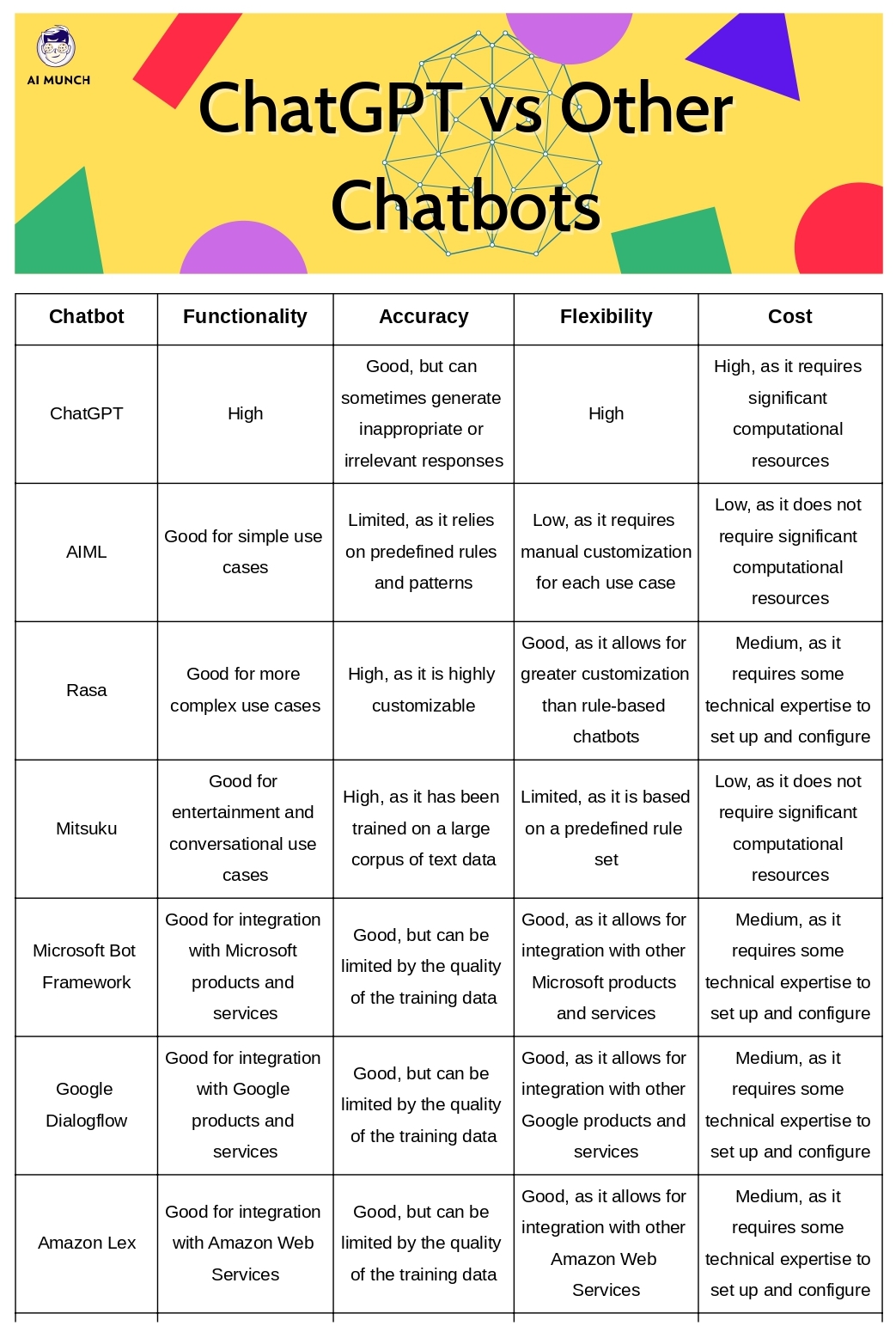
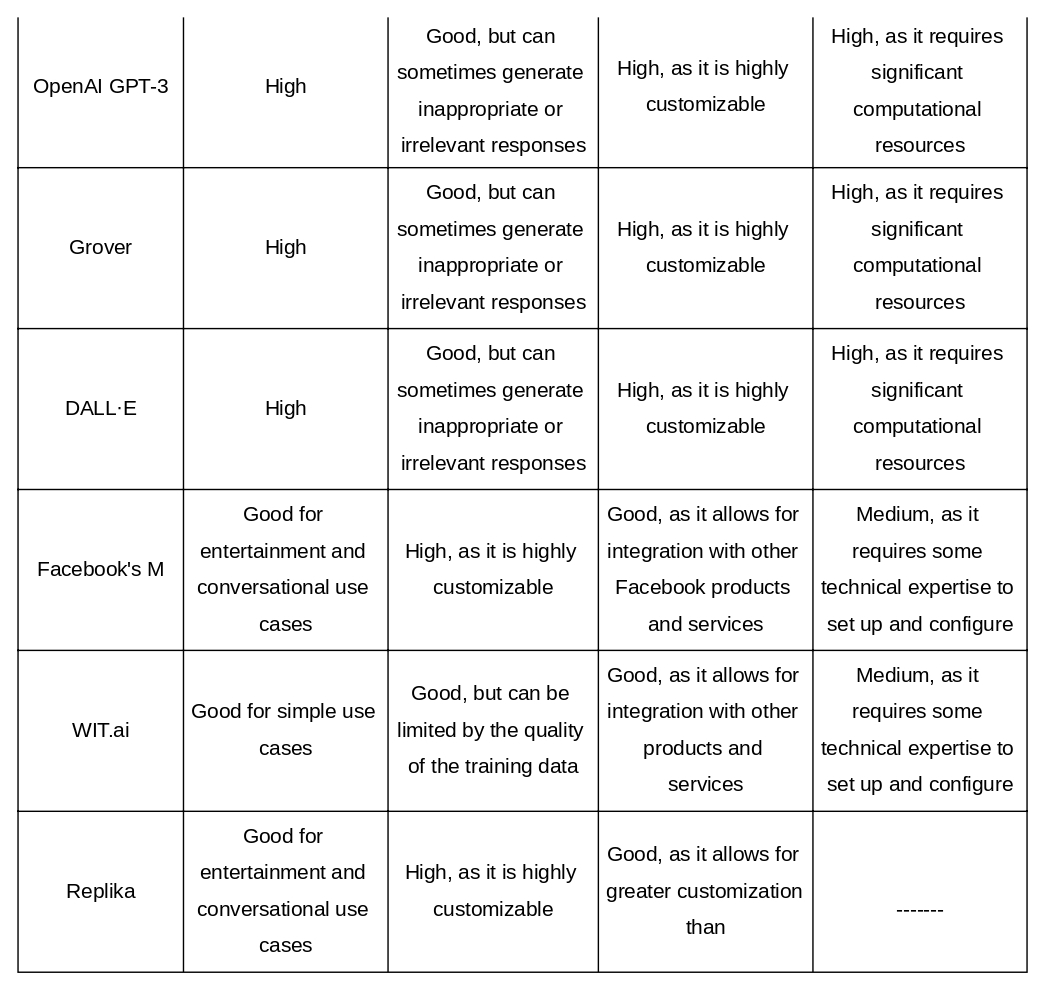
VI. A Look into the Giants of the Chatbot World: LaMDA, BB3, and GPT3
If you’re in the tech world, and you want the answer for “ChatGPT vs other Chatbots”, then you’ve likely heard of LaMDA, BB3, and GPT3. These chatbot models have caught the media’s attention with their advanced language skills and large training datasets. But what exactly are they, and what makes them unique in the chatbot landscape? Now, we will briefly discuss LaMDa, BB3, and GPT3 and share important information and trends in the chatbot industry.
Meta’s BB3
Meta’s BB3 (Blender Bot 3) is a demo of a conversational AI prototype designed for research and experimentation. As a US-only project, BB3 may produce incorrect, rude, or untruthful answers, and its developers caution users to exercise caution in relying on its responses. With 175 billion parameters, BB3 is designed to improve the conversational ability of chatbots and make them feel as human as possible. It uses a combination of online searches and chat history to generate responses and is said to be 31% better in a conversational environment than other models, with 47% fewer mistakes than previous versions. However, like other advanced chatbots, it should not be considered a reliable source of information.
- BB3 results in only 2.5% errors, such as:
- 1% of answers go off-topic
- 0.11% inappropriate answers
- 1.36% nonsense answers
Google LaMDA
Since the launch of ChatGPT, social media has been buzzing with speculation about who will triumph in the ChatGPT vs Google battle. We have already compared ChatGPT and Google Bard, and Bard AI is part of LaMDA. Google introduced LaMDA in May 2021, a language model for dialogue applications capable of conversing on a wide range of topics. With years of development and training on billions of dialogue records, LaMDA boasts 137 billion parameters, 2.81 trillion sentences, and 1.56 trillion words – 40 times more than previous models. It can read text, figure out how terms relate, and make predictions based on the context. It can also be programmed to respond in surprising, helpful, or funny ways and to avoid discriminatory or unethical ones. During a demonstration, LaMDA was asked to impersonate Pluto and answer what it wanted people to know, responding with an emotional statement, “I am not just a stone, but a beautiful planet.”
VII. Conclusion
A. Summary of the key differences ChatGPT vs other chatbots:
The ChatGPT vs Other Chatbots discussion will take time to end, as AI technology is evolving by the day. ChatGPT vs Google war is not going to end anytime soon. ChatGPT is a perfect language model that can make responses that sound like they came from a person. It can be used in many situations and applications, but sometimes it gives answers that need correction or relevance to the information. Other chatbots like Rasa, Mitsuku, and Replika have pros and cons, like being more accurate, giving you more ways to customize them, and being easier to integrate with other systems and platforms.
B. The potential of ChatGPT and other chatbots:
Chatbots could change how we use technology and make many tedious and repetitive tasks easier to do. They could improve customer service, make businesses more efficient, and give people access to information and services who might not have them otherwise. Also, the growing capabilities of language models like ChatGPT are leading to rapid growth in the use of chatbots and other conversational AI technologies. This makes them more essential tools for businesses, organizations, and individuals.
C. The future of chatbots:
The future of chatbots looks good, thanks to advances in machine learning and deep learning that make chatbots more intelligent and capable. As technology improves, chatbots will become a more significant part of our everyday lives. They will be able to do a broader range of tasks and give us new ways to get information and services.
ChatGPT and other chatbots are highly capable, valuable tools for businesses, organizations, and individuals. When choosing a chatbot, it is essential to consider the use case’s specific requirements, such as functionality, accuracy, flexibility, and cost. In addition, it is critical that the chatbot is trained correctly and configured to meet the requirements of the specific use case and that its behavior is regularly monitored and adjusted over time. Chatbots are an exciting and rapidly developing field that will likely play an increasingly significant role in our lives in the coming years.
FAQs
As per the creators, ChatGPT, unlike other AI chatbots, can answer follow up questions, admit its mistakes, challenge incorrect premises, and reject inappropriate requests.
There are a lot of good alternatives to ChatGPT, such as Jasper, LaMDA, ChatSonic, Replika, and many more.
Primarily 3 basic types of chatbots are developed in healthcare – Prescriptive, Conversational, and Informative.
As a general rule, you can distinguish between two types of chatbots: rule-based chatbots and AI bots.
Top 8 Chatbots Software
Zendesk Support Suite
Intercom
Drift
Tidio
Qualified
MobileMonkey
Birdeye
Landbot
We’ve just seen that NLP chatbots use artificial intelligence to mimic human conversation. Standard bots don’t use AI, so their interactions usually feel less natural and human.
Do you want to read more? Check out these articles.
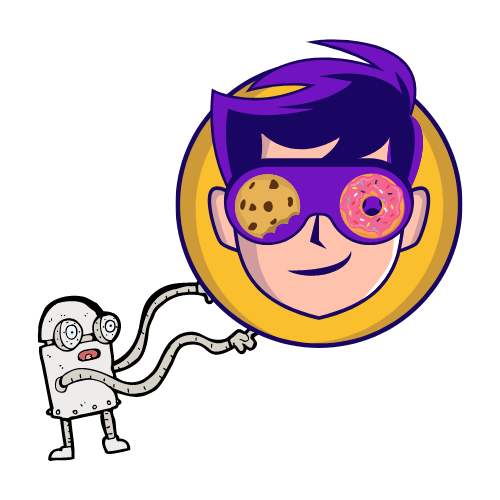


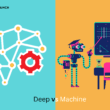
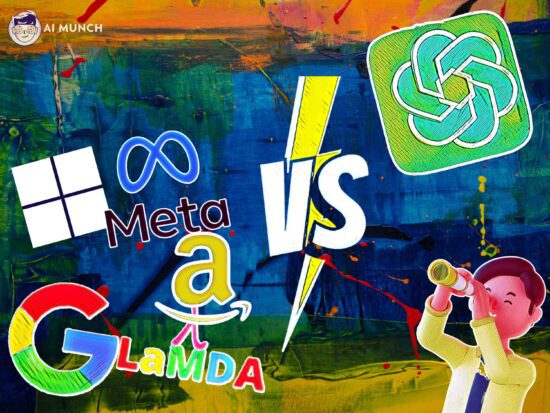
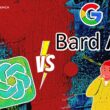
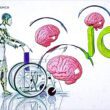
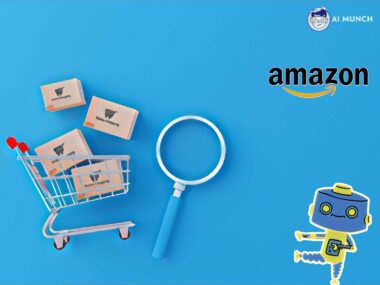
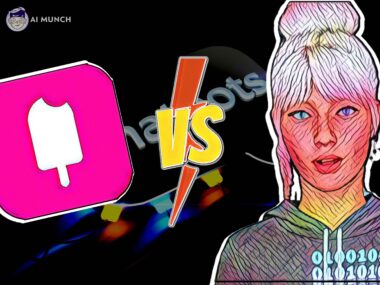
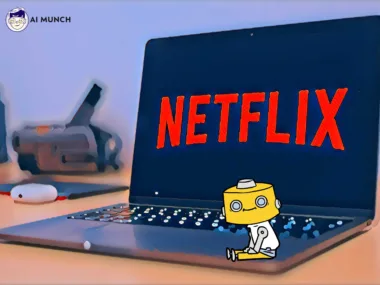

2 comments